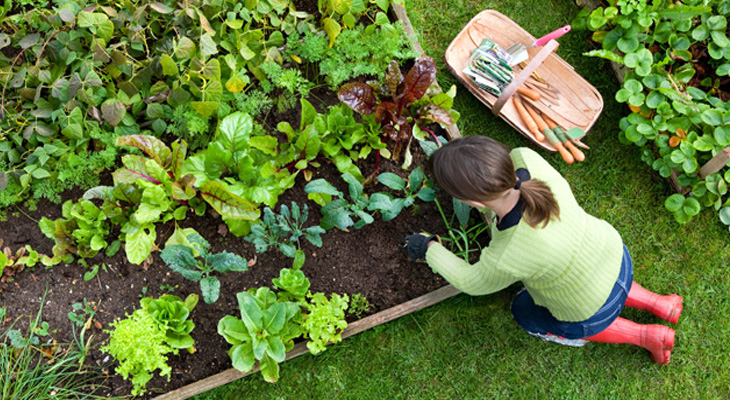
When I first began gardening, I grew vegetables. Is lettuce a vegetable? Well, let’s just say I was trying to grow food, although not very successfully. I was a half-hearted gardener who wilted in the summer heat faster than my lettuces in their Beatrix Potter rows. And yet even in those days, the few cherry tomatoes and the handful of fresh basil I harvested for a big pasta salad seemed made of sheer joy and wonder. Even a modest harvest can fill us up with a delicious pride. I found more success in the vegetable garden after our move to an old Pennsylvania farmhouse. It turns out that weeds growing practically right outside your back door will tend to get pulled more regularly than weeds in a community garden plot ten blocks from your apartment. But something strange happened to my farmhouse vegetable garden after a few years: it transformed itself into a flower garden. Oh, you could still find a few tomatoes and cucumbers somewhere in that glorious, overgrown mess, but more and more of my raised beds were given over to marigolds, zinnias, cosmos, nasturtium, sunflowers, and even a few roses tumbling in and around the garden gate. Vegetables? Or flowers? Or both? I have teeter-tottered between those two poles ever since.

Some years I seem to grow no food at all, in other years, I am ruthless and practical, and I plant tomatoes instead of dahlias. But here is the incredible truth all these growing seasons have brought home to me: gardens aren’t really for growing plants. Gardens are for growing LIFE. We may focus on the tomatoes and cucumbers or the cosmos and zinnias, but all along our gardens are growing earthworms and butterflies, birds and rabbits, neighborhood children at play and family dinners and all kinds of connections we might never have imagined possible. Of course, it isn’t all triumph and joy. Those rabbits are cute, but they are heartbreakers in the lettuce patch. Yet somehow even the disappointments become woven into a vital, abundant whole.

Your pots of herbs on the windowsill may seem isolated and small, but they are a link with your neighbor’s tomato bed, which is a link with the community garden, and a link to the forest preserve, the botanical garden, the organic farm–all of them joining up to wind the earth round in green ribbons of life. From seedtime to harvest and back again, the reconciling work of a garden is never finished, always ongoing, and, in every season, eager for us to join in.
***
Christie Purifoy is the author of Seedtime and Harvest, a series of lyrical essays exploring the myriad ways that gardening deepens our understanding of the natural world and grows our capacity for care and connection.
Learn more about Seedtime and Harvest here.

Leave a Reply